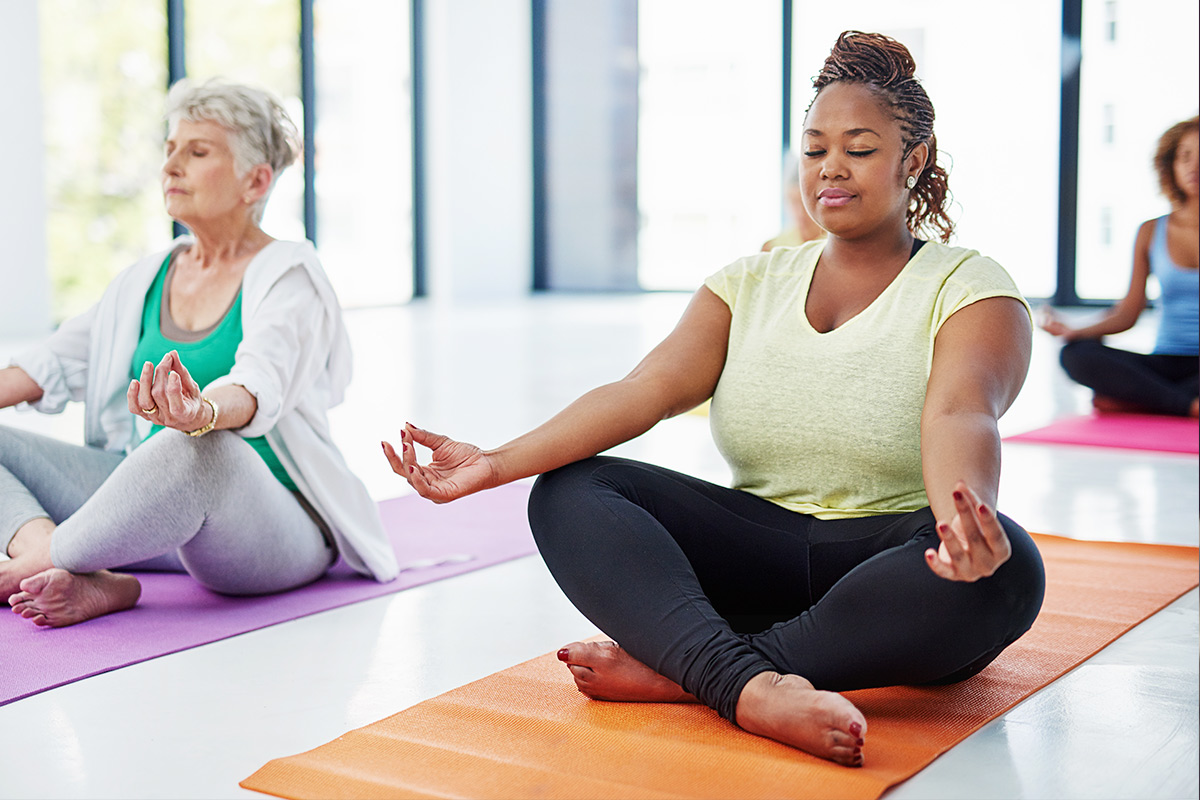Many people want to know how to start yoga when they are looking for a more relaxing, gentle form of exercise. But if practiced incorrectly, you can get hurt in your very first class.
Yoga improves strength, balance, flexibility and an increased sense of well-being. It can even improve certain bone and joint conditions such as carpal tunnel syndrome, tennis elbow and arthritis, but only when practiced in moderation.
Anyone with severe osteoporosis, high or low blood pressure, inner ear problems, known degenerative problems or pregnancy is at a greater risk for injury if they don’t mind their personal limitations, according to the American Academy of Orthopaedic Surgeons (AAOS).
Here are three ways to ensure you get all of the gain with none of the pain:
Stretch Slowly
The most common yoga injuries are caused by over-stretching your neck, shoulders, spine, legs and knees. The AAOS warns that weak or sore spots are more prone to tears in muscles, tendons and ligaments if you practice yoga postures incorrectly or push them too far. Even if you are flexible, fit and participate in other sports, yoga poses and postures (called “asanas”) are new to your body.
So instead of bringing a stretch to its limit, start small until you know how your body reacts. In yoga, according to AZCentral, the motto is, “no pain, no pain.” Beginners should start slow and first practice the basics of yoga breathing (called “pranayama”) instead of trying to pose perfectly the moment they start.
Find out about BlueCross member fitness discounts.*
Modify Your Pose
There is a lot of joint movement in yoga and much of it is weight-bearing; these can feel unfamiliar while learning the postures. Most yoga instructors have been practicing yoga for years, so don’t feel pressured to perform each pose the way they do. In fact, yoga instructors usually teach different ways to modify the poses or use props to protect major joints. Try these modifications first before moving ahead, in order to protect common weak spots in your neck, shoulders, back, hips, wrists and knees.
Pick the Perfect Class for You
If you are still wondering how to start yoga, take several beginner classes to see which type of yoga suits you best and which instructor matches your fitness needs. Choose a studio with a low student-to-teacher ratio so you can be sure the instructor can correct your posture and implement modifications as you learn the poses.
When choosing a teacher, ask how your teacher trained, what his or her certification is and whether they study it daily. Be aware there is no national certification program for teaching and each organization has its own standards, although most yoga certifications are sanctioned by the Yoga Alliance. From your very first class, you’ll notice practicing yoga is very “self”-centered. You’re concentrating on your own breathing patterns and performing your own postures, so don’t feel insecure about how you look. Instead, concentrate on how you feel.
Consult your doctor before beginning any diet or exercise program.
Get more information about specific health terms, topics and conditions to better manage your health on bcbst.com. BlueCross BlueShield of Tennessee members can access wellness-related discounts on fitness products, gym memberships, healthy eating and more through Blue365®. BCBST members can also find tools and resources to help improve health and well-being by logging into BlueAccess and going to the Managing Your Health tab.






Pingback: Five Ways to Kick Up Your Workout Routine | BlueHealth Solutions
Pingback: Five Ways to Encourage Your Child to Exercise | BlueHealth Solutions
Pingback: 3 Secrets to Sticking with Your Fitness Routine | BlueHealth Solutions